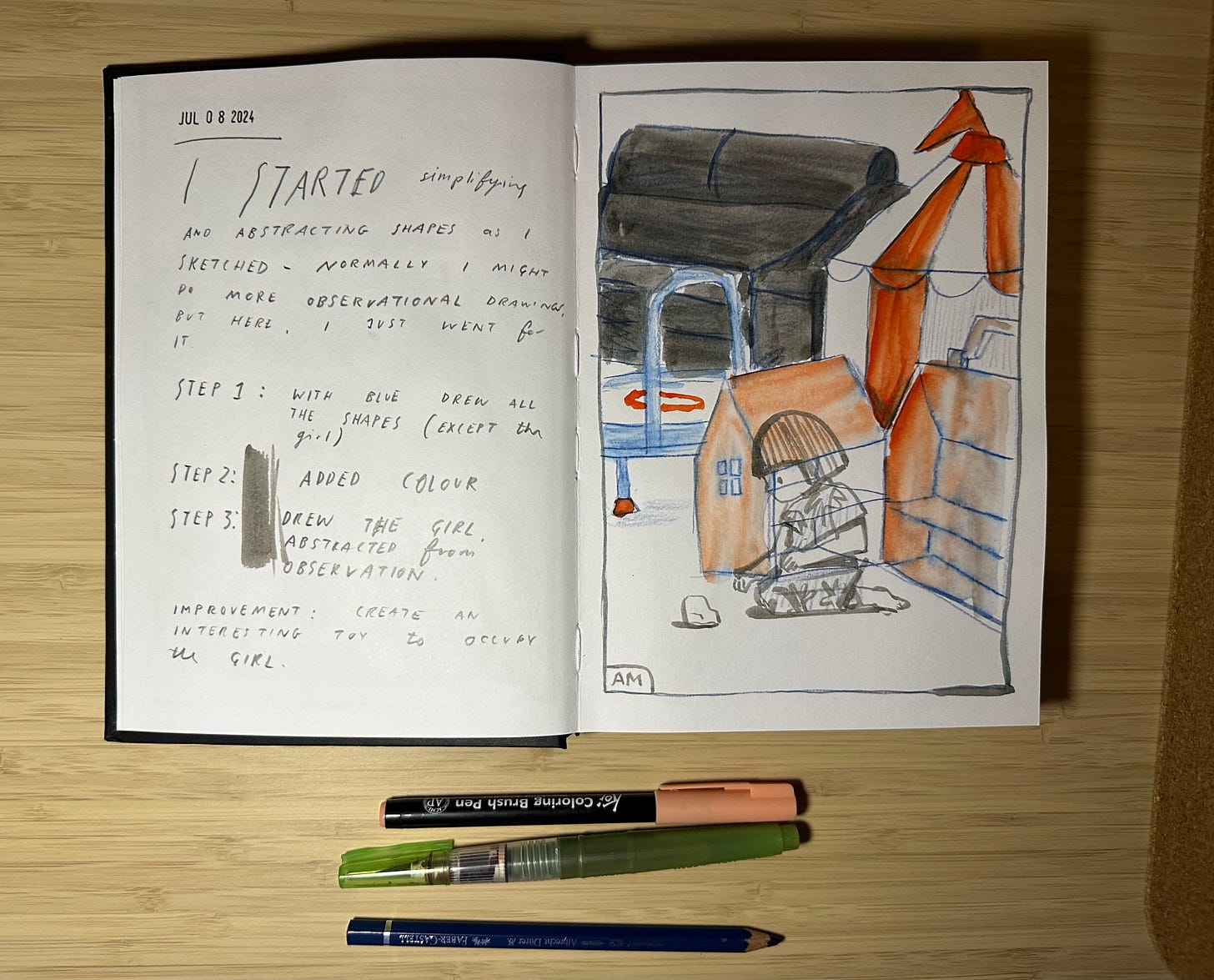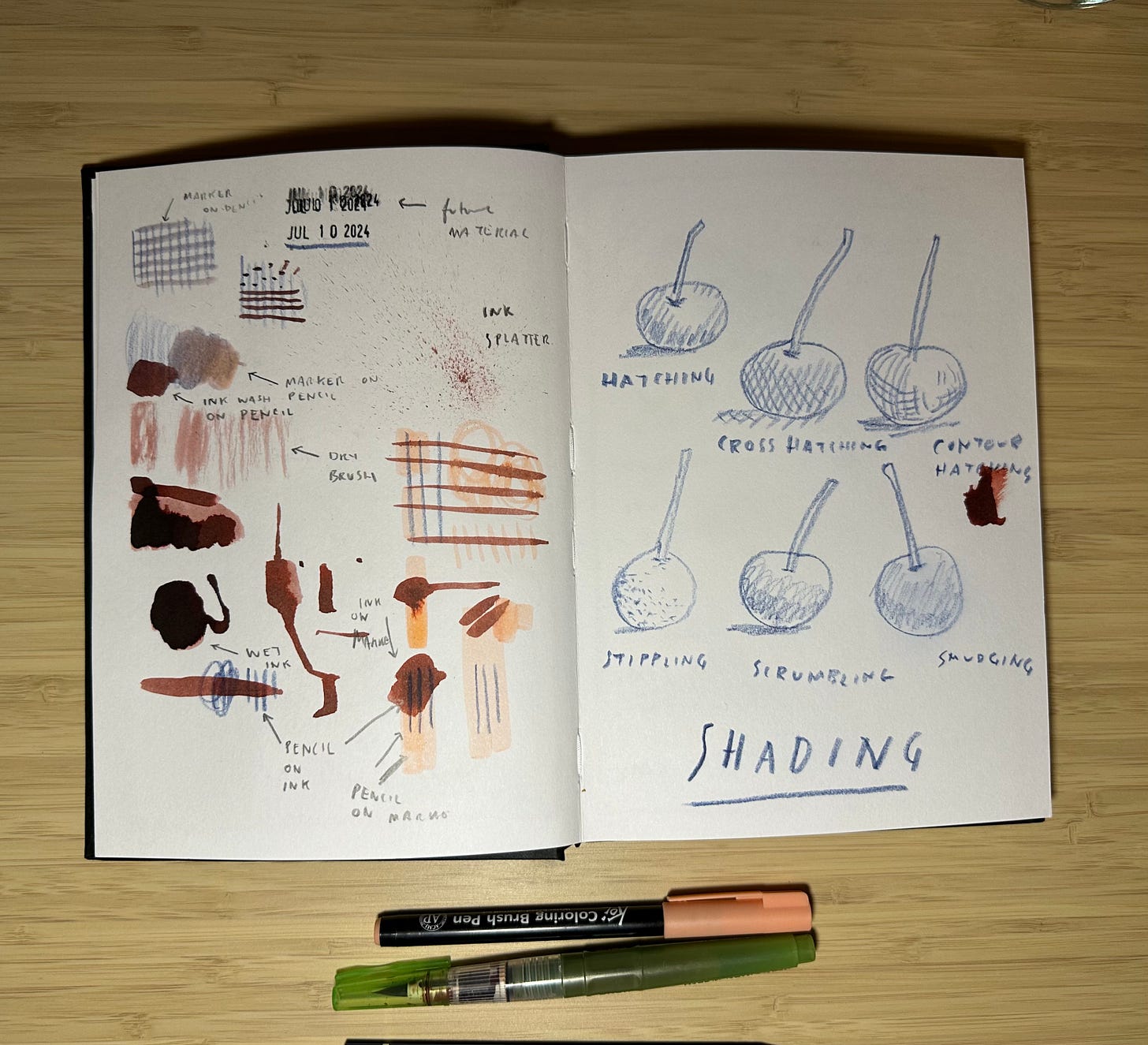The Benefits of Taking Notes in a Sketchbook
3 Materials Drawing Challenge with sketchbook notes
⭐️ If you missed it you can get my colour palettes for Procreate here
How to take notes in your sketchbook
As a review
To glean the maximum value from the process
The create creative capital for the future.
Here’s what that might look like.
Sketchbook Notes
One of my favourite formats is to have the drawing in a frame on one page, and notes on another.
The scribbles and test marks came first, the text came after the drawing.
The wash and ink combo came out way too dark, I should dilute it further because you can always layer washes to get darker tones.
I decided to replace the wash and keep the marker and pencil
I made a task to practice pencil skills
The notes here were about the process of how I created this. And a suggestion for improvement.
I can imagine using this sketch in the future as a basis of an illustration. In this way this sketch has become a kind of creative capital that I will be able to cash in, in the future.
3 Materials, was designed to be portable, so I really appreciated having my materials at a cafe. I replaces the black ink wash with a marooon ink. Overall I’m pleased with this colour combo, but in my review I made a note to do more with textures.
Review notes develop a positive self critique, that pushes the work forward.
One of the things my illustrations are know for is texture.
And that is born out of a genuine interest and intention to depict the physical texture of various objects, as well as pushing materials to make a variety of unconventional marks.
This means practice and experimentation.
On the left page I try various combinations of materials. And on the right I push what I can get out of a single material. I annotated the experiments to explain what I was trying to accomplish or what I did to produce the various textures.
I made some bad drawings of birds from real life.
But I like how I combined some of the materials, particularly the blue line on pink marker. Again this is creative capital that I can use in the future.
What I like about these is that I just went for them.
there is an energy that comes from doing that. And even if it’s a bad drawing (like these are) that kind of energy is appealing. When you have a goal to do 50 sketches in a challenge, you come to accept that some of them or even most of them won’t be great.
Part of the fun of the challenge is to discover how many bad drawings you need to get a good one. This is an important ratio to know, and will help with time management in doing real work.
It’s really useful to know that for let’s say, every 10 drawings you make, one of them is going to be good.
Those are my notes.
Drawing Project
This week’s Drawing Project is to continue with the 3 Materials Drawing Challenge, but taking notes as you go.
Here is a summary of the take aways from this weeks notes:
Be willing to make bad drawings courageously
Build creative capital by taking note of combinations of colours and materials that work
Maximise the texture you get out of your materials
Review your work and take notes of potential improvements.
List the process of creating interesting work so you can recreate it in the future
One page for notes and scribbles, one page for the drawing











I do like to write on the back pages and draw on the front pages.
Hi Adam,
Thanks for your post, which I really liked. Do you select 3 materials and use them for a time, ie a week. Or do you pick a different 3 materials every day?